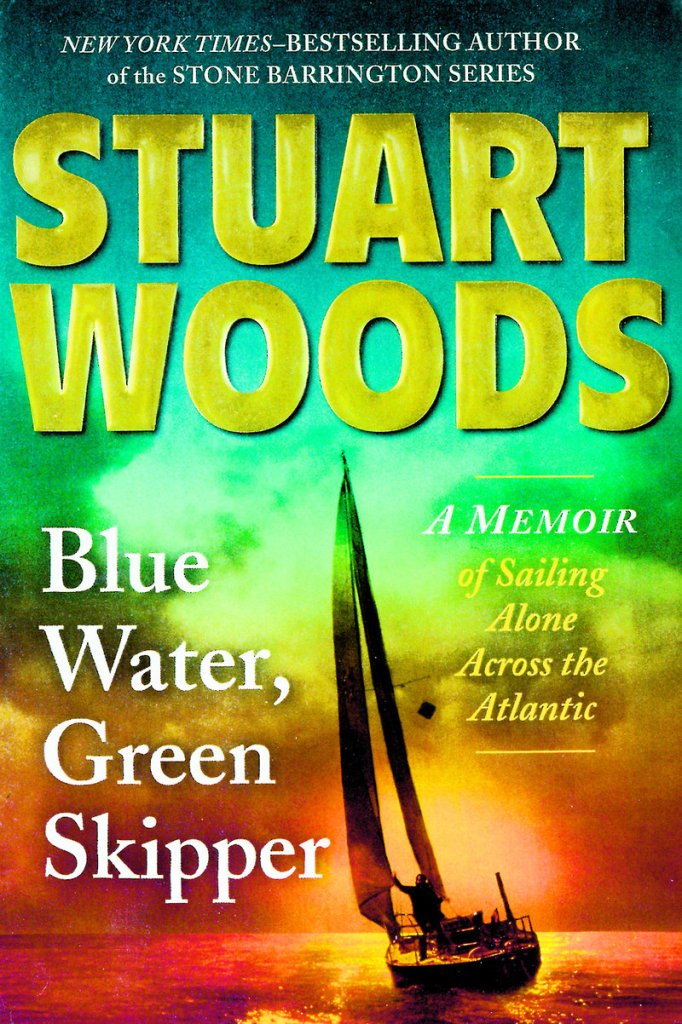After reading the cover hype about novelist Stuart Woods’ nonfiction “Blue Water, Green Skipper: A Memoir of Sailing Alone Across the Atlantic,” I almost took a pass on reviewing it.
Consider this flap boast: The author “had never owned more than a ten foot plywood dinghy, when he decided to take on one of the world’s most demanding ocean voyages; the (1976) Observer Single-handed Transatlantic Race. How at the age of thirty-eight, did a self-proclaimed novice go from small ponds to the big sea?”
Too frequently, one reads of confident incompetents who set out for Europe in a boat, at best needing to be rescued at sea, at worst vanishing into the null. The word “how,” rather than the self-absorbed “why,” made me reconsider, and a good thing. Who cares why somebody does something foolish? Those who prepare and are ready for the challenge prove far more instructive.
Furthermore, Woods provides a candid, step-by-step chronicle of those who made the whole epic possible, from the building of the yacht, Golden Harp, at Cork, Ireland, to her arrival at Newport, R.I.
Technically, Woods starts his sailing career at a friend’s summer home at Castine, Maine, in 1966. Anyone who has ever sailed and loves it knows, like Woods, that once under way, there is no going back.
Wood’s decision to enter the Observer competition in an under-24-foot boat was impulsive but not harebrained or poorly planned. He looked at a variety of vessels before meeting designer Ron Holland and shaping a craft that would become Golden Harp. The latter would have problems, but most were worked out in trials with the author at the helm.
As a sailor, Woods worked every chance he could, accruing 64 hours of classroom instruction, 10 days of practical instruction and 4,000 miles of offshore sailing (1,300 single-handed).
After a bureaucratic snag or two (Woods is not overly sympathetic with the Irish way of doing business in the ’70s), he was granted an Irish Yachting Association’s Yachtmaster’s Certificate.
Anyone interested in sailing, transatlantic racing, boatyards or clubs in Ireland and parts of England and the Azores will thoroughly enjoy “Blue Water, Green Skipper,” with its vivid sketches of individuals and incidents.
Woods might be seen as a bit of a name dropper — one wife of a friend wrote the best-selling biography of Winston Churchill’s mother, and actor Raymond Burr ends up owning and running an estalagem (bar) in the Azores. Most of the names relate to mariners who are either very wealthy or patching things together.
Woods, though, calls himself a “fortunate man.” Indeed, he was on his own, debt-free, and his mother owned a thriving business and could back him financially. He was also at the start of what would become a solid writing career.
Most folks never find themselves in such a position. Still, one suspects that even then, few would take the risks he did.
The Observer race in 1976 was not exactly a matter of astrolabes and square sails, but it was before the advent of GPS and other helpful aids to navigation. It was a difficult race.
Out of the 125 boats that set out from Portsmouth, England, 63 finished.
While most withdrew because of problems, five were sunk, and two skippers (both veterans) perished somewhere at sea. Not a sport for the faint of heart.
Woods tells an engaging tale, which should appeal to a variety of readers. It is written in a clear style, and carries much information relating to its subject, time and place.
William David Barry is a local historian who has authored /co-authored seven books, including “Maine: The Wilder Side of New England” and “Deering: A Social and Architectural History.” He lives in Portland.
Send questions/comments to the editors.



Success. Please wait for the page to reload. If the page does not reload within 5 seconds, please refresh the page.
Enter your email and password to access comments.
Hi, to comment on stories you must . This profile is in addition to your subscription and website login.
Already have a commenting profile? .
Invalid username/password.
Please check your email to confirm and complete your registration.
Only subscribers are eligible to post comments. Please subscribe or login first for digital access. Here’s why.
Use the form below to reset your password. When you've submitted your account email, we will send an email with a reset code.